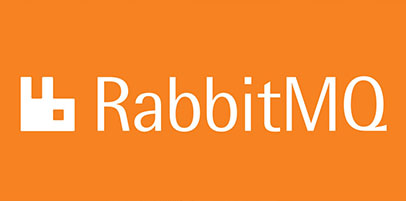
In this tutorial, we will show you how to install RabbitMQ on Debian 10. For those of you who didn’t know, RabbitMQ is open source message broker software (sometimes called message-oriented middleware) that implements the Advanced Message Queuing Protocol (AMQP). The RabbitMQ server is written in the Erlang programming language and is built on the Open Telecom Platform framework for clustering and failover. Client libraries to interface with the broker are available for all major programming languages.
This article assumes you have at least basic knowledge of Linux, know how to use the shell, and most importantly, you host your site on your own VPS. The installation is quite simple and assumes you are running in the root account, if not you may need to add ‘sudo‘ to the commands to get root privileges. I will show you through the step-by-step installation of RabbitMQ on a Debian 10 (Buster).
Prerequisites
- A server running one of the following operating systems: Debian 10 (Buster).
- It’s recommended that you use a fresh OS install to prevent any potential issues.
- A
non-root sudo useror access to theroot user. We recommend acting as anon-root sudo user, however, as you can harm your system if you’re not careful when acting as the root.
Install RabbitMQ on Debian 10 Buster
Step 1. Before we install any software, it’s important to make sure your system is up to date by running the following apt commands in the terminal:
sudo apt update sudo apt upgrade
Step 2. Installing Erlang.
RabbitMQ requires Erlang to be installed on the system. Run the following command to install Erlang:
wget https://packages.erlang-solutions.com/erlang/debian/pool/esl-erlang_23.1.5-1~debian~stretch_amd64.deb sudo dpkg -i esl-erlang_23.1.5-1~debian~stretch_amd64.deb
Next, update your system package list and install Erlang:
sudo apt update sudo apt install erlang erlang-nox
Step 3. Installing RabbitMQ on Debian 10.
Now we add RabbitMQ apt repository to your system. Also, you need to import the RabbitMQ signing key on your system:
sudo add-apt-repository 'deb http://www.rabbitmq.com/debian/ testing main' wget -O- https://www.rabbitmq.com/rabbitmq-release-signing-key.asc | sudo apt-key add -
Once done, update apt-cache and install the RabbitMQ server on your system:
sudo apt update sudo apt install rabbitmq-server
After successfully installed, Use the following commands to enable the RabbitMQ service on your system. Also, start the RabbitMQ service:
sudo systemctl enable rabbitmq-server sudo systemctl start rabbitmq-server
Step 4. Create User on RabbitMQ.
Now we create your own administrator account on the RabbitMQ server using the following commands. Change password with your own password:
sudo rabbitmqctl add_user admin password sudo rabbitmqctl set_user_tags admin administrator sudo rabbitmqctl set_permissions -p / admin ".*" ".*" ".*"
Step 5. Configure the RabbitMQ Management Dashboard.
You can optionally enable the RabbitMQ Management Web dashboard for easy management:
sudo rabbitmq-plugins enable rabbitmq_management
Step 6. Accessing RabbitMQ Web Interface.
RabbitMQ will be available on HTTP port 15672 by default. Open your favorite browser and navigate to http://your-domain.com:15672 or http://server-ip-address:15672. Use the username and password created in step 4 and complete the required steps to finish the installation.

Congratulations! You have successfully installed RabbitMQ. Thanks for using this tutorial for installing the latest version of RabbitMQ on Debian 10 Buster. For additional help or useful information, we recommend you check the official RabbitMQ website.